Home>Interior Design>What Causes Frost On The Inside Of Windows?
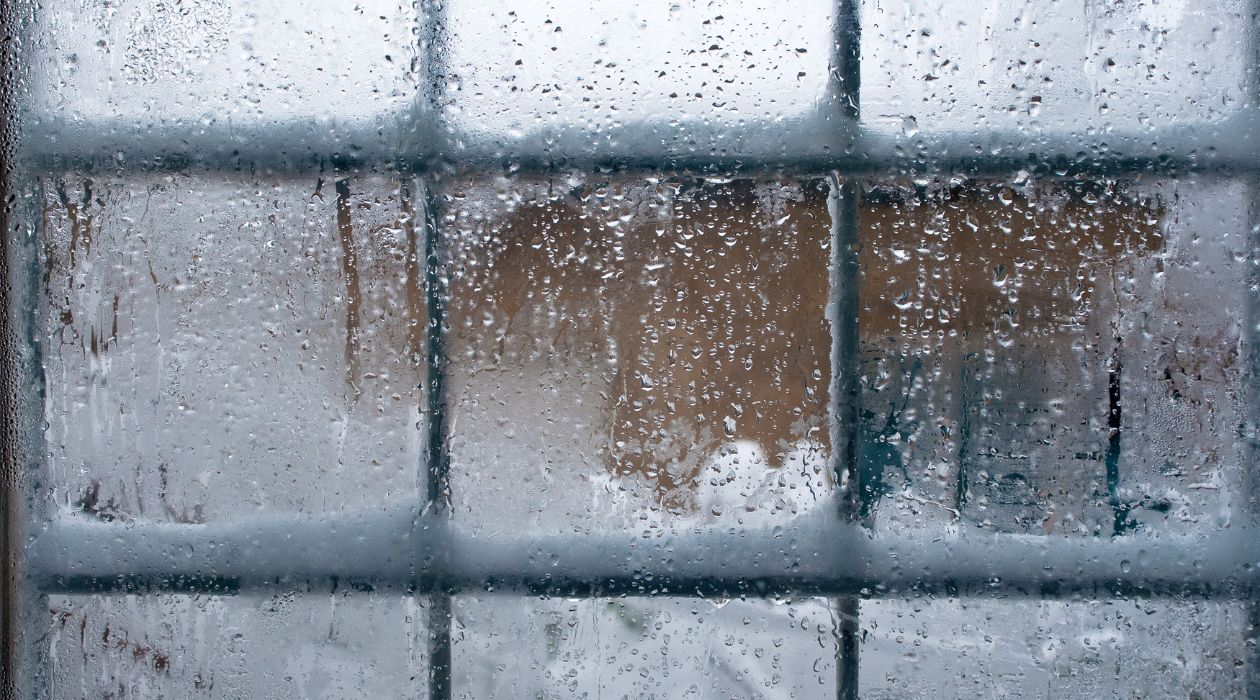

Interior Design
What Causes Frost On The Inside Of Windows?
Modified: January 23, 2024
Learn about the causes of frost on the inside of windows and how it can impact your interior design. Find out how to prevent and remove frost buildup for a comfortable and stylish home.
(Many of the links in this article redirect to a specific reviewed product. Your purchase of these products through affiliate links helps to generate commission for Storables.com, at no extra cost. Learn more)
Introduction
Welcome to the fascinating world of interior design! Whether you are an aspiring designer, a homeowner looking to spruce up your space, or someone with a keen interest in aesthetics, this article is here to guide you through the basics of interior design.
Interior design is the art and science of enhancing the interior of a space to create a visually pleasing and functional environment. It goes beyond just choosing the right furniture and colors; it involves understanding the principles of design, utilizing space effectively, and creating a harmonious balance.
In this article, we will dive deep into the world of interior design, exploring its importance, key components, and how you can incorporate it into your own home. We will also discuss various design styles, color schemes, and practical tips to transform any space into a stunning and inviting sanctuary.
So, whether you are looking to revamp your living room, create a serene bedroom retreat, or spruce up your kitchen, let’s embark on this design journey together!
Key Takeaways:
- Preventing frost on the inside of windows involves addressing insulation, humidity, ventilation, leaks, coverings, and heating. Implementing these strategies ensures a comfortable, frost-free home environment.
- By combining insulation, ventilation, window coverings, and heating devices, you can maintain a consistent indoor temperature and prevent frost formation on the inside of windows. These strategies contribute to a comfortable and condensation-free living space.
Understanding Frost on Windows
Frost on windows is a common occurrence during colder months, and it can be both beautiful and frustrating. While frost on the outside of windows is expected, frost on the inside can be a cause for concern. Understanding why frost forms on the inside of windows can help you address the issue and prevent it from recurring.
Frost forms when moist air comes into contact with a cold surface, causing the water vapor to freeze. When this happens on the outside of windows, it is typically due to the cold temperatures outside. However, when frost develops on the inside of windows, it indicates that there are specific conditions within your home that are contributing to this phenomenon.
Excessive moisture and temperature differences are the primary causes of frost on the inside of windows. When warm, humid air comes into contact with a cold window surface, the moisture in the air condenses and freezes, resulting in frost formation. This is a sign that there is excess humidity in your home, and the windows are not adequately insulated.
Another factor that contributes to frost on windows is poor ventilation. When there is insufficient airflow in a room, moisture gets trapped, leading to condensation and ultimately frost. Inadequate ventilation can be a result of sealed homes, limited use of exhaust fans, or blocked air vents.
Window leaks and drafts are also common culprits when it comes to frost on the inside of windows. If there are gaps or cracks around the window frames, cold air can seep in, causing the windows to become colder than the surrounding air. This temperature difference leads to condensation and frost formation.
Lifestyle factors such as drying clothes indoors, cooking without proper ventilation, and even excessive plant watering can contribute to high humidity levels and, consequently, frost on windows. Additionally, weather conditions, such as extremely cold temperatures and high humidity levels outdoors, can exacerbate the issue.
By understanding the causes of frost on the inside of windows, you can take proactive measures to address the issue and prevent it from happening in the future. In the following sections, we will explore some effective strategies to prevent frost and maintain a comfortable and condensation-free home environment.
Causes of Frost on the Inside of Windows
Frost on the inside of windows can be a frustrating problem that many homeowners encounter during the colder months. Understanding the causes of this issue is crucial in finding effective solutions and preventing it from recurring. Here are some common causes of frost on the inside of windows:
- Temperature Difference: One of the primary causes of frost is the temperature difference between the inside and outside of the window. If the indoor temperature is significantly higher than the outdoor temperature, and the windows are not properly insulated, condensation can occur, leading to frost formation.
- High Humidity Levels: Excessive humidity inside a home can contribute to the formation of frost on windows. Humidity levels tend to increase during activities such as cooking, showering, and drying clothes indoors. When the warm, moist air comes into contact with the cold window surface, it condenses and freezes, resulting in frost.
- Poor Insulation: Insufficient insulation around windows can allow cold air to penetrate, causing the temperature of the windows to drop. This temperature difference promotes condensation and frost formation.
- Inadequate Ventilation: Limited airflow and inadequate ventilation prevent moisture from escaping, leading to high humidity levels and condensation on windows. Improper use of exhaust fans, blocked air vents, or sealed homes can contribute to this issue.
- Condensation: When warm, moist air comes into contact with a cold window surface, it condenses and forms water droplets. If the temperature continues to drop, these water droplets can freeze and turn into frost.
- Window Leaks: Gaps or cracks in window frames can allow cold outdoor air to seep into the home, causing the windows to become colder than the surrounding air. This temperature difference leads to condensation and frost formation.
- Drafts: Drafty windows, characterized by air leaks or poorly sealed frames, can allow cold air to enter the home. As a result, the temperature of the windows drops, leading to condensation and frost formation.
- Double or Triple-Pane Windows: While double or triple-pane windows provide better insulation compared to single-pane windows, they can still experience frost if the seals are broken or if there is a temperature difference between the panes.
- Lifestyle Factors: Certain activities, such as drying clothes indoors, cooking without proper ventilation, and overwatering plants, can increase indoor humidity levels and contribute to condensation and frost on windows.
- Weather Conditions: Extremely cold temperatures and high humidity levels outdoors can exacerbate the formation of frost on windows, especially if the windows are not adequately insulated.
By identifying the specific causes contributing to frost on your windows, you can take appropriate steps to address the issue and ensure a comfortable and condensation-free home environment. In the next section, we will explore methods to prevent frost on the inside of windows.
Temperature Difference
One of the primary causes of frost on the inside of windows is a significant temperature difference between the interior and exterior of your home. When the indoor temperature is warmer than the outdoor temperature, and the windows are not properly insulated, condensation can occur, leading to the formation of frost.
This temperature difference creates the perfect environment for moisture in the air to condense on the window surface. As the warm, humid air comes into contact with the cold window, the water vapor within the air cools down and transforms into liquid water. If the temperature continues to drop, this liquid water can freeze and form frost on the window pane.
To prevent frost caused by temperature difference, it is crucial to improve the insulation of your windows. This can be done by ensuring that the window frames are properly sealed and that there are no gaps or cracks that allow cold air to seep in. Additionally, you can consider using window insulating film or weatherstripping to further enhance the insulation properties of your windows.
It is also important to control the heating and cooling in your home to minimize the temperature difference between indoor and outdoor areas. You can achieve this by adjusting your thermostat to maintain a consistent temperature throughout the day, avoiding drastic temperature changes that can contribute to condensation and frost formation.
If you have single-pane windows, which are less insulated than double or triple-pane windows, you may experience more significant temperature differences and subsequent frost formation. Consider upgrading to energy-efficient windows with multiple panes and low-emissivity coatings to mitigate this issue.
By addressing the temperature difference between the inside and outside of your home, you can significantly reduce the occurrence of frost on the inside of your windows. In the next section, we will discuss another common cause of frost – high humidity levels – and how to mitigate it.
High Humidity Levels
High humidity levels inside your home can contribute to the formation of frost on the inside of windows. When the moisture in the air reaches its saturation point and cannot hold any more water vapor, it begins to condense on cool surfaces, such as windows. This condensation can then freeze and turn into frost.
Several factors can lead to high humidity levels in your home. Activities such as cooking, showering, drying clothes indoors, and even excessive plant watering can release moisture into the air, increasing humidity levels. Additionally, poor ventilation and inadequate airflow can trap humidity inside, exacerbating the problem.
To combat high humidity levels and prevent frost formation, there are several steps you can take:
- Use exhaust fans: When cooking in the kitchen or taking a shower, make sure to turn on the exhaust fan to remove excess moisture from the air. This helps to prevent humidity buildup and reduce the chances of frost on your windows.
- Open windows: If weather permits, opening windows periodically can help to improve air circulation and reduce humidity levels. This allows damp air to escape and fresh air to come in, preventing condensation and frost formation.
- Invest in a dehumidifier: A dehumidifier is a great tool for removing excess moisture from the air. It works by extracting water vapor and collecting it in a reservoir, effectively reducing humidity levels in the room. Be sure to choose the appropriate size and capacity for your space.
- Properly vent clothes dryers: If you dry your clothes indoors, make sure your dryer is vented to the outside. This helps to direct moisture out of your home rather than allowing it to accumulate indoors.
- Monitor indoor plants: Overwatering indoor plants can contribute to excess humidity. Be mindful of the watering needs of your plants and ensure proper drainage to avoid adding unnecessary moisture to the air.
- Air out your home: Regularly opening windows and doors to allow fresh air to circulate throughout your home can help to reduce humidity levels. This practice is especially beneficial in rooms prone to high moisture, such as bathrooms and kitchens.
By effectively managing and reducing humidity levels in your home, you can minimize the likelihood of frost formation on the inside of your windows. In the next section, we will explore the role of ventilation in preventing frost and maintaining a comfortable indoor environment.
Poor Insulation
Poor insulation around windows is a common cause of frost on the inside of windows. Inadequate insulation allows cold air to penetrate through gaps and cracks, causing the windows to become colder than the surrounding air. This temperature difference leads to condensation and subsequent frost formation.
Insulation plays a crucial role in maintaining a comfortable indoor environment by minimizing heat loss and preventing cold air infiltration. When it comes to windows, proper insulation is essential to prevent frost formation and improve energy-efficiency.
If you suspect that poor insulation is contributing to frost on your windows, here are some steps you can take to address the issue:
- Seal gaps and cracks: Inspect the areas around your windows for any gaps or cracks that may be allowing cold air to seep in. Apply caulk or weatherstripping to seal these gaps and improve the insulation of your windows.
- Install window insulating film: Window insulating film is an affordable and effective solution for improving insulation. This plastic film is applied to the interior of the window and creates an additional layer of insulation, helping to reduce heat loss and condensation.
- Consider double or triple-pane windows: If your windows are old or single-pane, they may not provide sufficient insulation. Upgrading to double or triple-pane windows can significantly improve insulation and reduce the chances of frost formation. These windows have multiple layers of glass separated by insulating gas, which helps to minimize heat transfer.
- Use thermal window coverings: Thermal curtains or blinds can provide an extra layer of insulation when closed. They help to reduce heat loss and prevent cold air from coming into contact with the window surface, decreasing the likelihood of frost formation.
- Insulate window frames: Insulating window frames can further improve energy efficiency and reduce heat loss. Use foam insulation tape or spray foam to fill gaps between the window frames and the surrounding wall, effectively sealing off any air leaks.
By addressing poor insulation around windows, you can minimize temperature differences and reduce the occurrence of frost on the inside of your windows. Proper insulation not only helps to prevent frost but also improves energy efficiency, saving you money on heating bills in the long run.
In the next section, we will discuss the importance of adequate ventilation in preventing frost and maintaining a healthy indoor environment.
Inadequate Ventilation
Inadequate ventilation in your home can contribute to the formation of frost on the inside of windows. When there is limited airflow and stagnant air, moisture tends to accumulate, leading to high humidity levels and condensation on windows.
Ventilation is essential for maintaining a healthy indoor environment and preventing moisture-related issues, including frost formation. By ensuring proper airflow and ventilation, you can effectively reduce humidity levels and minimize the occurrence of frost on your windows.
If you suspect inadequate ventilation is contributing to frost on your windows, here are some steps you can take to improve ventilation:
- Open windows and doors: Opening windows and doors periodically allows for natural ventilation and fresh air exchange. This helps to remove stale air, excess moisture, and reduce humidity levels in your home.
- Use exhaust fans: Installing and properly using exhaust fans in areas prone to moisture, such as the kitchen and bathroom, is crucial in removing humid air and preventing condensation. Make sure to run the exhaust fans during and after activities that generate moisture, such as cooking, bathing, or using the dishwasher.
- Clean air vents and ducts: Over time, air vents and ducts can become blocked or clogged, hindering proper airflow. Regularly cleaning and maintaining these ventilation systems ensures that air can circulate freely, reducing the risk of moisture buildup and frost on windows.
- Keep interior doors open: Allowing air to flow freely throughout your home by keeping interior doors open helps to promote better airflow and ventilation. This helps distribute moisture evenly and reduces the chances of condensation and frost on windows.
- Invest in mechanical ventilation systems: If your home lacks natural ventilation or you live in a climate where opening windows year-round is not feasible, consider installing mechanical ventilation systems such as whole-house fans or heat recovery ventilators (HRVs). These systems help to exchange stale indoor air with fresh outdoor air, improving air quality and reducing humidity levels.
By addressing inadequate ventilation in your home, you can minimize moisture buildup, reduce humidity levels, and prevent frost from forming on the inside of your windows. Proper ventilation not only helps to maintain a comfortable and condensation-free environment but also promotes better indoor air quality.
In the next section, we will explore another common cause of frost on windows – condensation – and discuss ways to manage it effectively.
Condensation
Condensation is a common cause of frost on the inside of windows. It occurs when warm, moist air comes into contact with a cold surface, such as a window pane. The moisture in the air condenses and forms water droplets on the window, which can later freeze and turn into frost.
Condensation is often a result of high humidity levels within your home. Activities like cooking, bathing, and even breathing release moisture into the air, increasing the overall humidity. When this warm, humid air encounters the cool surface of a window, it cools down and reaches its dew point, causing condensation to form.
To prevent condensation and subsequent frost formation, it is important to manage indoor humidity levels. Here are some steps you can take:
- Use exhaust fans: When cooking or showering, turn on exhaust fans to remove excess moisture from the air. These fans help to expel humid air and prevent it from accumulating on your windows.
- Ventilate your home: Opening windows and allowing fresh air to circulate throughout your home helps to reduce humidity levels and prevent condensation. This is particularly important in rooms with high moisture levels, such as kitchens and bathrooms.
- Monitor indoor plants: Overwatering indoor plants can contribute to high humidity levels. Ensure proper drainage and adjust your watering schedule to avoid adding excess moisture to the air.
- Use a dehumidifier: A dehumidifier is an effective tool for reducing indoor humidity levels. It removes moisture from the air, helping to prevent condensation and frost on windows. Be sure to choose the right size and capacity for the area you want to dehumidify.
- Insulate windows: Improving the insulation of your windows helps to reduce temperature differences and minimize the likelihood of condensation. Seal any gaps, cracks, or drafts around the window frames to improve their overall efficiency.
- Warm up your home: Maintaining a consistent indoor temperature helps to minimize condensation. Avoid drastic temperature fluctuations by setting your thermostat to a comfortable level and avoiding excessive heating or cooling.
By managing indoor humidity levels and reducing condensation, you can minimize the occurrence of frost on the inside of your windows. It is important to strike a balance between maintaining a comfortable level of humidity and preventing excess moisture from causing condensation issues.
In the following sections, we will explore other factors that contribute to frost on windows, such as window leaks, drafts, and lifestyle factors. Stay tuned to learn how to address these causes effectively.
Window Leaks
Window leaks are a common cause of frost on the inside of windows. If there are gaps or cracks in the window frames or seals, cold outdoor air can seep into your home. When this cold air comes into contact with the warmer indoor air, it creates a temperature difference that promotes condensation and frost formation.
Window leaks can be caused by various factors, including aging windows, poor installation, or weather-related wear and tear. It’s important to address window leaks to prevent not only frost formation but also energy loss and potential water damage.
If you suspect window leaks are contributing to frost on your windows, here are some steps you can take to address the issue:
- Inspect for gaps and cracks: Carefully examine your window frames and seals for any visible gaps or cracks. Pay close attention to the corners and edges of the windows, as these are common areas for air leakage.
- Seal gaps and cracks: Use caulk or weatherstripping to seal any gaps or cracks around the window frames. This helps to prevent cold air from seeping in and reduces the temperature difference that leads to condensation and frost formation.
- Replace deteriorated or damaged seals: Over time, weatherstripping and seals can deteriorate or become damaged. Replace any worn-out or damaged seals to improve the insulation and efficiency of your windows.
- Consider professional window sealing: If the gaps and leaks around your windows are more significant, you may need professional assistance in sealing them properly. A professional can identify the areas of concern and apply appropriate sealants or insulation to eliminate leaks effectively.
- Upgrade to energy-efficient windows: If your windows are old or beyond repair, consider upgrading to energy-efficient windows. Newer window models offer better insulation and often come with improved sealing technology, reducing the likelihood of leaks and frost formation.
- Seek professional help: If you are unsure about the extent of window leaks or the best solutions for your specific situation, consult with a professional window installer or contractor. They can provide expert advice and recommendations tailored to your windows and help ensure proper insulation and sealing.
By addressing window leaks, you can significantly reduce the occurrence of frost on the inside of your windows. Proper insulation and sealing not only prevent frost formation but also improve energy efficiency and the overall comfort of your home.
In the next section, we will discuss another cause of frost on windows – drafts – and explore strategies to prevent them effectively.
Read more: How To Prevent Frost On Car Windows
Drafts
Drafts are a common cause of frost on the inside of windows. When there are gaps or poorly sealed window frames, cold air can enter your home, leading to a temperature difference between the window surface and the surrounding air. This temperature difference promotes condensation and frost formation.
Drafts can occur due to a variety of factors, including aging windows, gaps in window frames, or improper installation. It’s important to address drafts to prevent energy loss, improve comfort, and minimize the occurrence of frost on your windows.
If you suspect drafts are contributing to frost on your windows, here are some steps you can take to address the issue:
- Inspect window frames: Carefully inspect your window frames for any visible gaps or spaces where cold air may be entering. Check the corners, edges, and joints of the windows for potential draft sources.
- Seal gaps and cracks: Use weatherstripping or caulk to seal any gaps or cracks in the window frames. This helps to prevent cold air from infiltrating and reduces the temperature difference that leads to condensation and frost formation.
- Consider draft stoppers: Draft stoppers or draft snakes can be placed along the bottom of windows to block cold air from entering. These can be purchased or easily made by filling a fabric tube with insulation material such as foam or polyester filling.
- Apply window film: Window insulating film can provide an additional layer of insulation to your windows, reducing drafts and heat loss. It is easy to install and can help improve the overall efficiency of your windows.
- Upgrade to energy-efficient windows: If your windows are old or beyond repair, consider upgrading to energy-efficient windows. Newer window models are designed to minimize drafts and provide better insulation, reducing the chances of frost formation.
- Consult a professional: If you are unsure about how to address drafts effectively, consider consulting a professional window installer or contractor. They can assess your windows, identify the sources of drafts, and provide expert solutions tailored to your specific situation.
By addressing drafts and improving the seal of your windows, you can significantly reduce or eliminate frost on the inside of your windows. Properly sealed windows not only prevent frost formation but also improve energy efficiency and enhance the overall comfort of your home.
In the next section, we will discuss another factor that can lead to frost on windows – double or triple-pane windows – and explore their impact on condensation and frost formation.
Double or Triple-Pane Windows
Double or triple-pane windows can play a significant role in reducing the occurrence of frost on the inside of your windows. These windows consist of multiple layers of glass with insulating air or gas-filled spaces in between, providing enhanced insulation compared to single-pane windows.
While double or triple-pane windows offer improved insulation, they are not entirely immune to condensation and frost formation. However, they do help to minimize the temperature difference between the window surface and the interior air, reducing the likelihood of frost formation.
Here are some factors related to double or triple-pane windows that can impact condensation and frost:
- Seals: The seals between the glass panels of double or triple-pane windows are crucial in maintaining their insulating properties. If these seals are damaged or deteriorated, it can lead to the infiltration of moisture and compromise the insulation of the windows, increasing the chances of condensation and frost formation.
- Efficiency: Higher-quality double or triple-pane windows with low-emissivity (low-e) coatings offer better insulation and energy efficiency. These coatings help to reflect heat back into the room, reducing the temperature difference between the window surface and the indoor air, thereby minimizing condensation and frost formation.
- Gas fillings: Double or triple-pane windows are often filled with inert gases such as argon or krypton, which have better insulating properties than air. These gas fillings further improve the insulation of the windows, reducing cold spots and minimizing the likelihood of condensation and frost on the inside of the windows.
- Installation: Proper installation of double or triple-pane windows is essential to ensure their optimal performance. Incorrect or inadequate installation can compromise the insulation and integrity of the windows, potentially leading to drafts, leaks, and increased risk of condensation and frost formation.
- Maintenance: Regular maintenance of double or triple-pane windows is important to keep them in optimal condition. Inspect the seals, frames, and any hardware to ensure they are in good condition and functioning properly. Address any issues promptly to maintain the insulation and performance of the windows.
While double or triple-pane windows offer better insulation compared to single-pane windows, it’s important to note that they are not foolproof against condensation and frost. Proper maintenance and attention to sealing and insulation are still crucial to prevent these issues.
In the following sections, we will explore lifestyle factors and weather conditions that can contribute to frost on windows, and discuss strategies to manage them effectively.
To prevent frost on the inside of windows, try using a dehumidifier to reduce moisture in the air, improve ventilation, and use insulating window treatments.
Lifestyle Factors
Lifestyle factors can contribute to the formation of frost on the inside of windows. Certain activities and habits within your home can increase humidity levels and create conditions conducive to condensation and frost formation. Understanding these lifestyle factors can help you identify and address the root causes of the issue.
Here are some lifestyle factors that can contribute to frost on windows:
- Drying clothes indoors: Hanging wet laundry indoors can release a significant amount of moisture into the air, raising humidity levels and increasing the chances of condensation and frost. Whenever possible, dry clothes outdoors or use a well-ventilated area.
- Cooking without proper ventilation: Cooking generates steam and moisture, adding to the indoor humidity. If your kitchen lacks proper ventilation, such as an exhaust fan or range hood, the excess moisture can contribute to condensation and frost formation. Ensure you use exhaust fans or open windows while cooking to dissipate the moisture properly.
- Excessive plant watering: Overwatering indoor plants can increase humidity levels in your home. Be mindful of the watering needs of your plants and ensure proper drainage to avoid adding unnecessary moisture to the air.
- Improper use of humidifiers: Humidifiers can be beneficial in dry environments. However, if not used properly, they can add excessive moisture to the air and contribute to high humidity levels. Monitor and adjust your humidifier settings to maintain a comfortable humidity level without creating excess moisture in your home.
- Insufficient ventilation during showering or bathing: Taking hot showers or baths without using proper ventilation can release a large amount of steam and moisture into the air, increasing humidity levels and contributing to condensation and frost formation. Ensure you run exhaust fans or open windows while bathing to remove excess moisture effectively.
- Sealed homes: While airtight homes are energy-efficient, they can also trap moisture indoors. If your home is tightly sealed, it’s essential to ensure proper ventilation to prevent excessive humidity buildup. Opening windows or using mechanical ventilation systems can help manage humidity levels in sealed homes.
To prevent frost formation due to lifestyle factors, it is important to be mindful of activities that can increase humidity levels and address them accordingly. Taking steps such as using proper ventilation, limiting indoor plant watering, and being mindful of the moisture generated during cooking or showering can help maintain a comfortable and condensation-free indoor environment.
In the next section, we will discuss the impact of weather conditions on frost formation and explore strategies to manage them effectively.
Weather Conditions
Weather conditions play a significant role in the formation of frost on the inside of windows. Certain weather factors, such as extremely cold temperatures and high humidity levels outdoors, can exacerbate the likelihood of frost formation. Understanding how weather conditions can impact your windows can help you manage and prevent frost effectively.
Here are some weather conditions that can contribute to frost on windows:
- Extreme cold temperatures: When the outside temperature drops significantly, the surface of your windows becomes colder. If your windows are not properly insulated, this temperature difference can lead to condensation and frost formation.
- High humidity levels outdoors: If the outdoor air is already humid, it contains a higher amount of moisture. When warm indoor air comes into contact with this humid outdoor air, condensation is more likely to occur, leading to frost formation on your windows.
- Rapid temperature changes: Drastic temperature fluctuations can also contribute to condensation and frost on windows. When the temperature changes rapidly, moisture in the air may not have enough time to dissipate, resulting in condensation and frost formation on the windows.
- Sudden weather shifts: Weather conditions can change suddenly, causing variations in humidity levels and temperatures outdoors. These sudden shifts can impact the temperature and moisture content of your windows, increasing the chances of condensation and frost formation.
- Wind exposure: Windy conditions can affect the temperature and pressure around your windows, potentially intensifying the temperature difference between the indoor and outdoor air. This can promote condensation and frost formation on your windows.
- Severe storms: Severe weather events, such as heavy rain or snowstorms, can cause water infiltration into your windows and result in moisture buildup. This excess moisture can contribute to condensation and frost formation if not properly addressed.
To manage frost formation caused by weather conditions, you can take several steps:
- Monitor weather forecasts: Stay informed about the weather conditions in your area. This can help you anticipate potential temperature drops or humidity fluctuations and take preventive measures, such as adjusting your heating or ventilation settings accordingly.
- Use weatherstripping and insulation: Ensure your windows are properly sealed and insulated to minimize the impact of extreme temperatures and humidity changes. Weatherstripping and insulation materials can help reduce drafts and maintain more stable indoor conditions, reducing the likelihood of frost formation.
- Control indoor heating and humidity: By maintaining a consistent indoor temperature and humidity level, you can help minimize the impact of external weather conditions on your windows. Use HVAC systems or humidifiers/dehumidifiers to regulate these factors as needed.
- Consider window treatments: Window coverings, such as curtains or blinds, can provide an extra layer of insulation and help buffer the effects of extreme outdoor temperatures. They can also help with privacy and light control.
- Be mindful of ventilation: Proper ventilation is essential to manage moisture levels indoors. Ensure that exhaust fans are functioning correctly in areas prone to humidity, such as the kitchen and bathroom. Open windows periodically to allow fresh air exchange and minimize humidity buildup.
By understanding how weather conditions affect your windows and implementing preventive measures, you can better manage and prevent frost formation. Balancing indoor temperature and humidity levels, along with maintaining proper insulation and ventilation, will contribute to a more comfortable and frost-free indoor environment.
Now that we have explored the various causes of frost on the inside of windows and strategies to prevent it, let’s move on to the next section, where we will discuss effective methods for preventing frost and maintaining a comfortable home environment.
Read more: How To Mount Blinds Inside A Window
How to Prevent Frost on the Inside of Windows
Preventing frost on the inside of windows requires addressing the underlying causes related to temperature, humidity, insulation, ventilation, and lifestyle factors. By implementing the following strategies, you can minimize the occurrence of frost and maintain a comfortable and condensation-free home environment:
- Improve insulation: Proper insulation around windows is crucial in reducing temperature differences and preventing condensation. Seal gaps and cracks in window frames using caulk or weatherstripping, and consider using window insulating film or upgrading to energy-efficient double or triple-pane windows to enhance insulation properties.
- Reduce humidity levels: Keep humidity levels in check by using exhaust fans in areas prone to moisture, such as the kitchen and bathroom. Be mindful of activities that add moisture to the air, such as drying clothes indoors, and consider using a dehumidifier to maintain optimal humidity levels.
- Increase ventilation: Proper ventilation helps to remove excess moisture and maintain good indoor air quality. Open windows periodically to allow fresh air circulation, use exhaust fans, and ensure that air vents and ducts are clean and unobstructed to promote airflow.
- Address window leaks: Gaps or cracks in window frames can lead to drafts and frost formation. Seal these openings with caulking or weatherstripping to prevent cold air from entering your home and reducing temperature differentials.
- Use window coverings: Insulated curtains or blinds can provide an additional layer of insulation and help buffer the effects of outdoor temperatures. Keep them closed at night to prevent heat loss and open them during the day to allow sunlight in and warm up the space.
- Utilize heating devices: Maintaining a consistent indoor temperature helps reduce the potential for condensation and frost. Use heating devices, such as thermostats or space heaters, to regulate the temperature and minimize temperature fluctuations.
It’s also important to be mindful of lifestyle factors that contribute to humidity levels, such as overwatering plants or drying clothes indoors. By managing these factors and implementing the preventive strategies outlined above, you can significantly reduce the occurrence of frost on the inside of your windows.
Remember to monitor weather conditions and be proactive in adjusting ventilation and heating settings accordingly. Regular maintenance of windows and proper insulation will contribute to maintaining a comfortable and frost-free home environment.
By implementing these preventive measures, you can enjoy clear and frost-free windows, improve energy efficiency, and create a cozy and condensation-free space in your home.
Now that you have a comprehensive understanding of the causes and prevention methods for frost on the inside of windows, you can take proactive steps to create a comfortable and visually pleasing environment. Whether it’s improving insulation, adjusting humidity levels, or addressing lifestyle factors, you’re well-equipped to prevent the annoyance of frost and enjoy clear, beautiful windows all year round.
Embrace the world of interior design and transform your space into a haven of style and functionality. Happy decorating!
Improve Insulation
Improving insulation is a crucial step in preventing frost on the inside of windows. Proper insulation helps maintain consistent temperatures, minimizing temperature differences that can lead to condensation and frost formation. Here are some strategies to enhance insulation and keep your windows frost-free:
- Seal gaps and cracks: Inspect your windows for any gaps or cracks around the frames. Use caulk or weatherstripping to seal these areas, preventing cold air from infiltrating your home and reducing the chances of frost formation.
- Add window insulating film: Window insulating film provides an extra layer of insulation by creating an air pocket that reduces heat transfer. Apply this film to the inside of your windows to improve insulation and minimize temperature differences.
- Upgrade to double or triple-pane windows: If you have single-pane windows, consider upgrading to double or triple-pane windows. These windows feature multiple layers of glass with insulating air or gases in between. The added insulation helps prevent temperature extremes and reduces condensation and frost formation.
- Ensure proper window installation: Proper installation of windows is crucial for insulation. Improperly installed windows can have gaps or poor seals, leading to drafts and temperature differences. If your windows are not installed correctly, consult a professional to rectify the issue and improve insulation.
- Insulate window frames and sills: Insulating window frames and sills further enhances insulation. Apply foam insulation tape or spray foam around the frames and sills to seal any gaps and prevent air leakage. This helps maintain consistent temperatures and reduces the likelihood of frost on your windows.
By improving the insulation of your windows, you create a barrier that minimizes temperature differences and prevents condensation and frost formation. Properly sealed and insulated windows also improve energy efficiency, reducing the overall heat loss from your home.
Remember to regularly check the condition of your window insulation and address any gaps or damage promptly. By maintaining a well-insulated window environment, you can enjoy a comfortable, condensation-free space with clear windows all year round.
Now that you understand how to improve insulation, let’s move on to the next prevention method – reducing humidity levels.
Reduce Humidity
Reducing humidity levels in your home is an effective strategy to prevent frost on the inside of windows. Excessive moisture in the air can lead to condensation and frost formation when it comes into contact with cold window surfaces. Here are some steps you can take to reduce humidity and maintain a frost-free environment:
- Use exhaust fans: When cooking in the kitchen or taking a shower, make sure to turn on exhaust fans to remove moisture from the air. These fans help expel humid air, reducing humidity levels and minimizing the likelihood of condensation and frost on your windows.
- Open windows for ventilation: Periodically open windows to allow fresh air circulation and moisture to escape. Natural ventilation helps reduce humidity and prevent the buildup of excess moisture in your home.
- Fix water leaks: Water leaks contribute to high humidity levels. Inspect your plumbing system for any leaks and address them promptly. Repairing leaks ensures that excess moisture is not introduced into your indoor environment.
- Control indoor plant watering: Overwatering indoor plants can add to the humidity in your home. Be mindful of your plant watering routine and ensure proper drainage to avoid excessive moisture lingering in the air.
- Utilize a dehumidifier: Consider using a dehumidifier in areas with high humidity, such as basements or bathrooms. These appliances remove excess moisture from the air, helping to maintain optimal humidity levels and prevent condensation on your windows.
- Avoid indoor drying: Whenever possible, refrain from drying clothes indoors. If you must dry clothes inside, use proper ventilation, such as opening windows or using a clothes dryer with external venting, to prevent excessive humidity buildup.
By taking these steps to reduce humidity levels, you can create a more balanced and comfortable indoor environment while minimizing the chances of frost formation on your windows. Regularly monitor humidity levels using a hygrometer to ensure they remain within the recommended range (between 40-50% for most homes).
Remember, maintaining proper humidity levels not only prevents frost but also contributes to a healthier living space by reducing the risk of mold and mildew growth. By managing humidity effectively, you can enjoy clear windows and a more pleasant and condensation-free home environment.
Now that you have learned how to reduce humidity, let’s move on to the next strategy – increasing ventilation.
Increase Ventilation
Increasing ventilation is a key strategy in preventing frost on the inside of windows. Adequate airflow helps to remove excess moisture from the air, reducing humidity levels and minimizing the chances of condensation and frost formation. Here are some effective ways to increase ventilation in your home:
- Open windows and doors: Regularly open windows and doors, especially during mild weather, to allow fresh air to circulate throughout your home. This helps to remove stale air and moisture, reducing humidity levels and preventing condensation on windows.
- Use exhaust fans: Install and properly use exhaust fans in areas prone to moisture, such as the kitchen and bathroom. Turn on these fans during and after activities that generate humidity, like cooking or taking a shower, to extract moist air and ventilate the space.
- Install trickle vents: Trickle vents are small adjustable openings installed in windows or walls that allow controlled ventilation without compromising security. These vents facilitate continuous airflow, helping to minimize humidity buildup and prevent condensation on windows.
- Clean air vents and ducts: Regularly clean air vents and ducts to remove dust, debris, and any obstructions that may hinder proper airflow. Blocked vents can impede ventilation, trapping moisture indoors and increasing the chances of condensation and frost formation.
- Utilize natural ventilation techniques: Use natural ventilation techniques, such as cross-ventilation, to maximize airflow. Open windows on opposite sides of your home to create a natural breeze that encourages the exchange of indoor and outdoor air, reducing humidity levels.
- Consider mechanical ventilation systems: Mechanical ventilation systems, such as whole-house fans or heat recovery ventilators (HRVs), can help improve airflow and ventilation throughout your home. These systems help to bring in fresh air from the outside while expelling stale air, maintaining a healthy indoor environment.
Increasing ventilation enhances air circulation and reduces humidity levels, mitigating the risk of condensation and frost on your windows. By implementing these strategies, you can enjoy improved air quality, comfortable indoor conditions, and frost-free windows.
Remember to adjust your ventilation strategies based on the weather conditions and outdoor air quality. Be mindful of security and safety considerations when opening windows or using ventilation systems.
With increased ventilation, you can create a fresher, healthier living environment while minimizing the occurrence of frost on the inside of your windows. Ready to tackle the next prevention method? Let’s move on to addressing window leaks.
Read more: What Is Frosted Glass
Address Window Leaks
Addressing window leaks is crucial in preventing frost on the inside of windows. Gaps or cracks in window frames can allow cold outside air to seep into your home, causing temperature differences that lead to condensation and frost formation. Here are some steps to address window leaks effectively:
- Inspect window frames: Carefully examine your windows for any visible gaps or cracks. Check the corners, edges, and joints of the windows, as these are common areas where leaks occur.
- Seal gaps and cracks: Use caulk or weatherstripping to seal any gaps or cracks in the window frames. Apply the sealant around the edges and joints to prevent air leakage and minimize the temperature difference between indoor and outdoor air.
- Replace damaged or worn-out seals: Over time, weatherstripping and seals can deteriorate or become damaged. Replace any worn-out or damaged seals to restore the integrity of your windows and prevent cold air from entering your home.
- Consider professional window sealing: If the gaps and leaks around your windows are significant, it may be beneficial to seek professional assistance for a thorough sealing job. Professionals can identify the areas of concern and apply appropriate sealants or insulation materials to eliminate leaks effectively.
- Upgrade to energy-efficient windows: If your windows are old or beyond repair, consider upgrading to energy-efficient windows. Newer window models come with improved sealing technology, reducing the likelihood of leaks and providing better insulation against temperature differences.
- Install storm windows or window inserts: Storm windows or window inserts can provide an additional layer of insulation, minimizing air leakage and temperature differences. These additions can help prevent condensation and frost formation on your windows.
By addressing window leaks, you can reduce the chances of cold air entering your home and prevent frost on the inside of your windows. Properly sealed windows not only minimize condensation and frost but also improve energy efficiency by reducing heat loss.
Regularly check the condition of your window seals and address any leaks promptly. By maintaining a tight window seal, you can enjoy a more comfortable and frost-free living environment.
Now that you understand how to address window leaks, let’s move on to the next prevention method – using window coverings.
Use Window Coverings
Using window coverings is an effective strategy to prevent frost on the inside of windows. These coverings provide an additional layer of insulation and create a barrier between the window surface and the indoor air. Here are some ways to use window coverings to prevent frost formation:
- Insulated curtains: Install insulated curtains that have thermal properties. These curtains are designed to provide an extra layer of insulation, reducing heat loss and preventing cold air from coming into contact with the window surface.
- Thermal blinds: Use thermal blinds that help to trap warm air near the window and prevent cold drafts. These blinds have insulating properties that help maintain a more stable indoor temperature and minimize condensation and frost formation.
- Window quilts: Window quilts are thick fabric coverings that can be attached to the window frames. They act as an insulating layer, reducing heat loss and preventing temperature differences that lead to condensation and frost formation.
- Cellular shades: Cellular shades, also known as honeycomb shades, have a unique cellular structure that traps air, providing insulation and reducing heat transfer. These shades can help prevent frost formation by maintaining a more consistent window temperature.
- Window film: Apply window insulating film to the glass surface. This film creates an additional layer that helps to reduce heat loss and prevent cold air from contacting the window, minimizing the chances of condensation and frost formation.
- Consider window quilts: Window quilts are thick fabric coverings that can be attached to the window frames. They act as an insulating layer, reducing heat loss and preventing temperature differences that lead to condensation and frost formation.
Using window coverings not only helps to prevent frost formation but also enhances energy efficiency by reducing heat loss. Remember to open your window coverings during the day to allow sunlight to warm the space, and then close them at night to provide an extra layer of insulation.
Choose window coverings that are suitable for your specific needs, taking into consideration factors such as the climate in your area, the level of insulation required, and your personal preference for style and functionality.
By using window coverings effectively, you can create a more comfortable and frost-free indoor environment while improving the overall energy efficiency of your home.
Now that you have learned how to use window coverings to prevent frost, let’s move on to another prevention method – utilizing heating devices.
Utilize Heating Devices
Utilizing heating devices is an effective strategy to prevent frost on the inside of windows by maintaining a consistent and comfortable indoor temperature. By providing sufficient warmth, these devices help minimize temperature differences that can lead to condensation and frost formation. Consider the following options:
- Thermostats: Use a programmable thermostat to regulate the temperature in your home. Set it to maintain a consistent temperature throughout the day, preventing drastic temperature fluctuations that can contribute to condensation and frost formation.
- Space heaters: Use space heaters strategically to warm specific areas of your home. Position them near windows prone to frost formation to counteract the cold air and prevent condensation. Remember to use space heaters safely and follow manufacturer guidelines.
- Radiators or baseboard heaters: If your home is equipped with radiators or baseboard heaters, ensure they are working efficiently and providing adequate heat. Distribute the heat evenly throughout the room to minimize temperature differences near windows.
- Underfloor heating: Underfloor heating systems can provide a comfortable and consistent warmth throughout a space. By heating the floor, these systems help prevent cold air near windows, reducing the likelihood of frost formation.
- Kick space heaters: Kick space heaters are compact heaters installed in the baseboard near the floor. They help to supply additional heat to cold spots near windows, improving comfort and preventing condensation and frost formation.
- Fireplaces or wood-burning stoves: If you have a fireplace or wood-burning stove, use them to generate heat and maintain a cozy interior atmosphere. Keep in mind that proper ventilation is crucial to ensure that combustion byproducts do not contribute to excess moisture in the air.
When using heating devices, it is important to strike a balance between warmth and energy efficiency. Avoid excessive heating, as this can cause rapid temperature changes that may lead to condensation. Regularly monitor and adjust the settings of your heating devices to maintain a comfortable and consistent indoor temperature.
By utilizing heating devices strategically, you can create a warm and frost-free environment near your windows. Consistent heating helps minimize temperature differences, reducing the occurrence of condensation and frost on the inside of your windows.
Now that you are familiar with various heating device options, let’s conclude by summarizing the key points for preventing frost on the inside of windows.
Conclusion
Preventing frost on the inside of windows involves addressing various factors such as insulation, humidity levels, ventilation, window leaks, window coverings, and utilizing heating devices. By implementing the strategies discussed, you can maintain a comfortable and frost-free indoor environment.
Improving insulation by sealing gaps, using window insulating film, or upgrading to energy-efficient windows helps minimize temperature differences and prevent condensation and frost formation. Reducing humidity levels through proper ventilation, using exhaust fans, and controlling indoor plant watering helps to manage moisture in the air and minimize the chances of frost on windows.
Increasing ventilation by opening windows, using exhaust fans, and considering mechanical ventilation systems improves airflow and reduces humidity build-up. Addressing window leaks by sealing gaps and cracks, replacing worn-out seals, and considering professional assistance helps eliminate drafts and prevent frost.
Utilizing window coverings such as insulated curtains, thermal blinds, or window quilts creates an additional layer of insulation and reduces the contact between cold air and windows. Utilizing heating devices, such as thermostats, space heaters, or underfloor heating, helps maintain a consistent and comfortable indoor temperature, minimizing temperature differences and, in turn, preventing frost formation near windows.
Remember to consider the specific needs of your home and climate when implementing these prevention methods and adjust strategies based on weather conditions. Regular maintenance and monitoring of window seals, insulation, and ventilation systems are essential to ensure their effectiveness.
By combining these strategies and staying proactive in managing moisture and temperature levels, you can enjoy clear, frost-free windows throughout the year. The prevention of frost on the inside of windows not only improves the aesthetics of your home but also contributes to energy efficiency and a healthier living environment.
So, start implementing these prevention methods and create a comfortable and condensation-free space that showcases the beauty of your windows. Enjoy a cozy and frost-free environment no matter the outside temperature!
Frequently Asked Questions about What Causes Frost On The Inside Of Windows?
Was this page helpful?
At Storables.com, we guarantee accurate and reliable information. Our content, validated by Expert Board Contributors, is crafted following stringent Editorial Policies. We're committed to providing you with well-researched, expert-backed insights for all your informational needs.
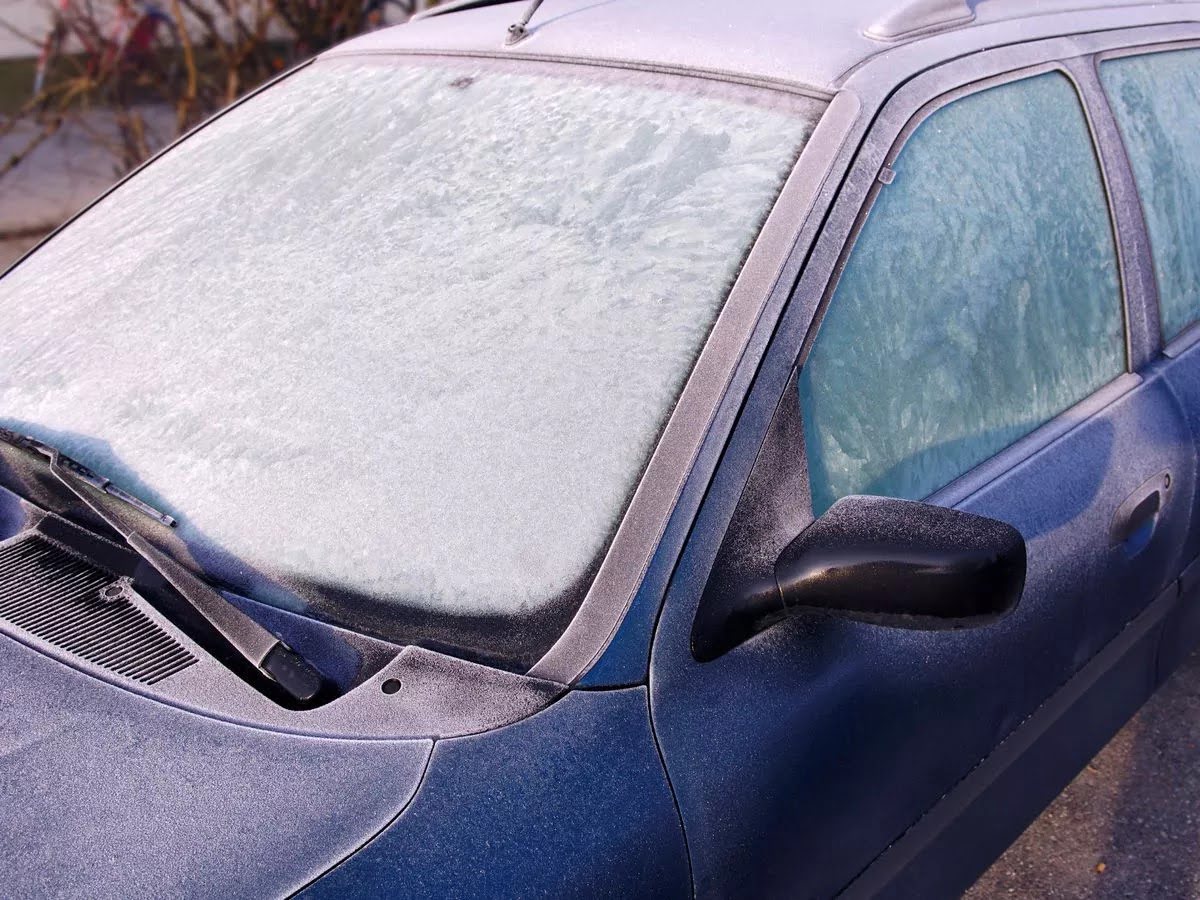
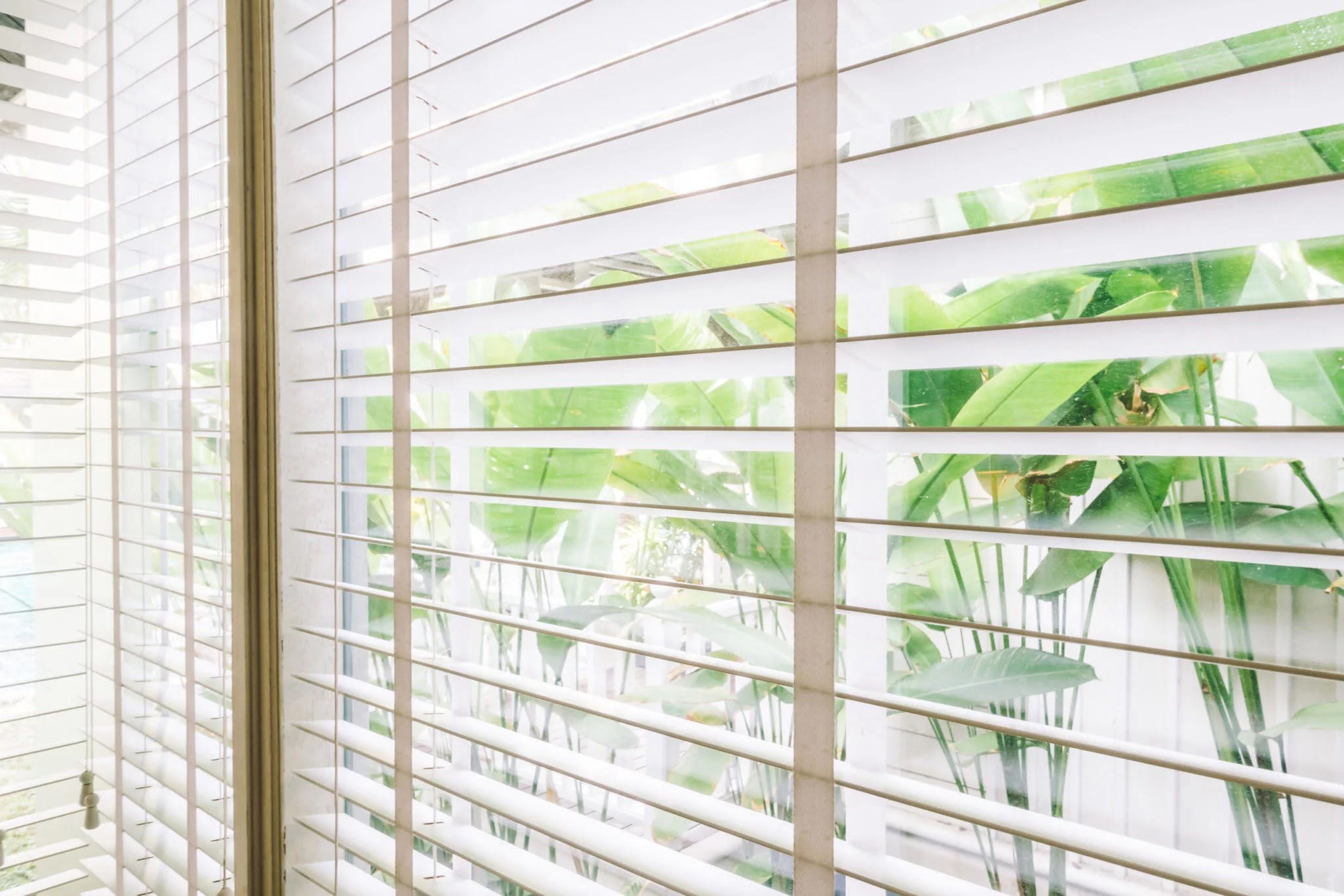
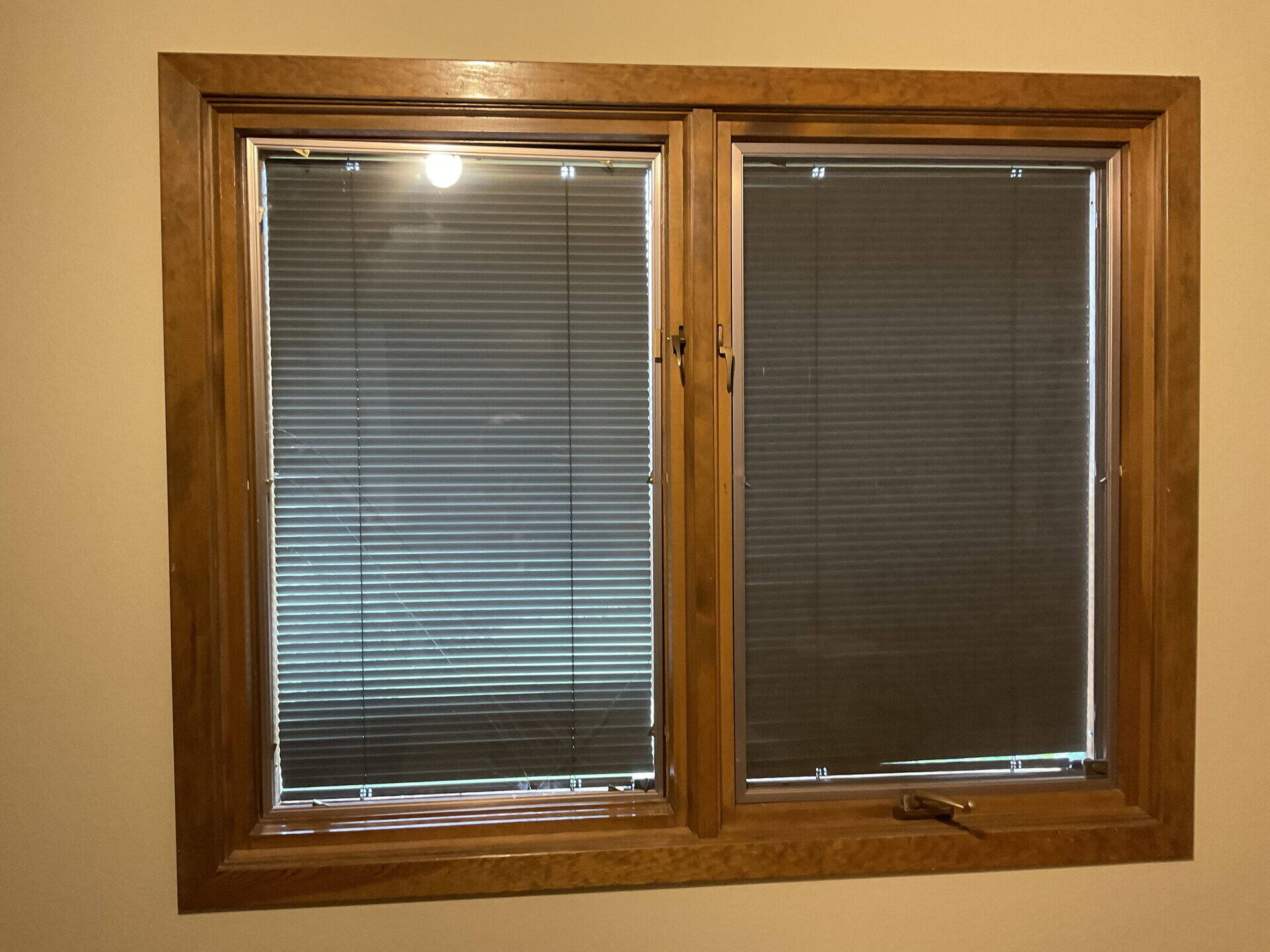
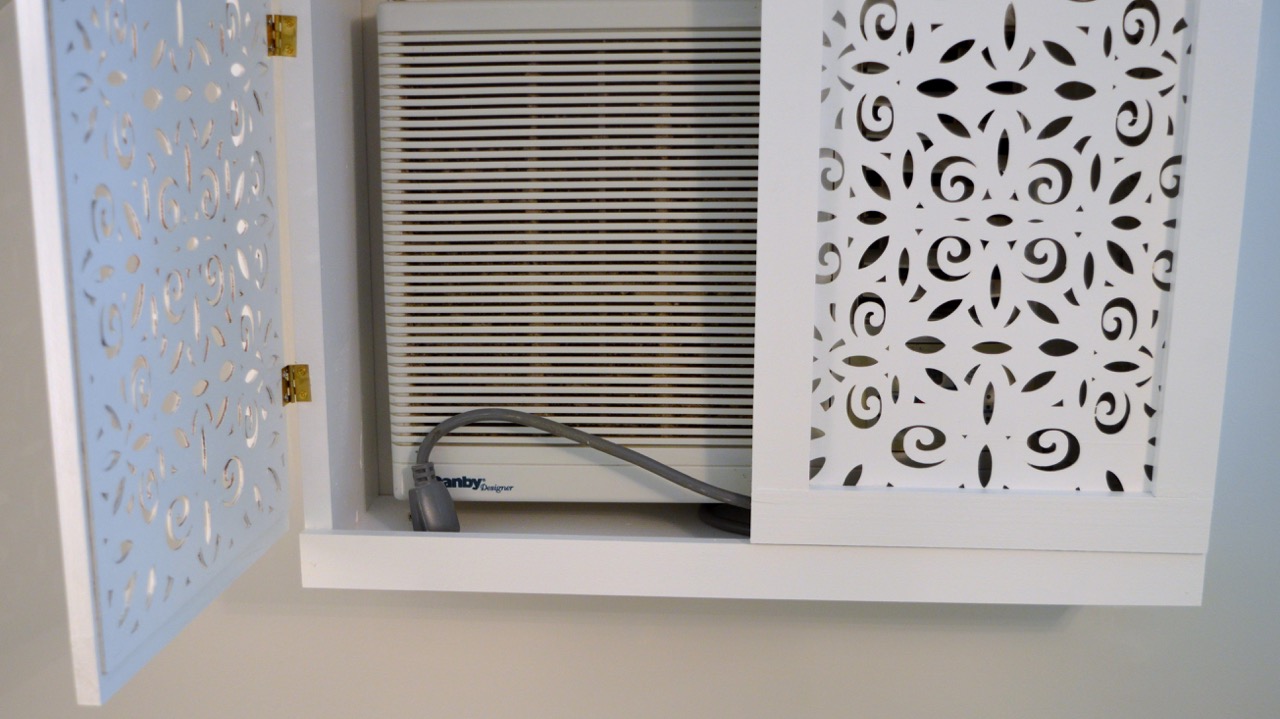
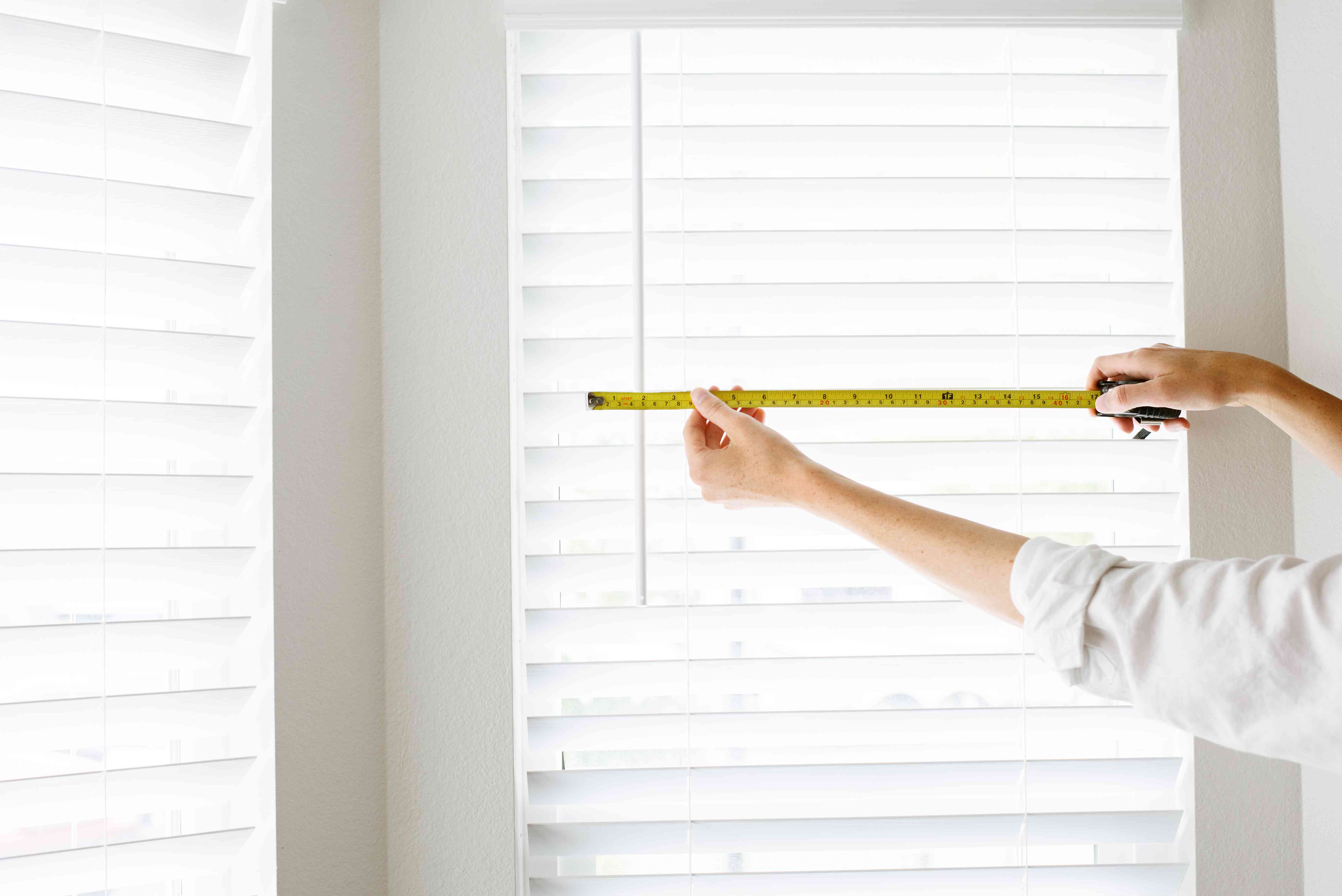
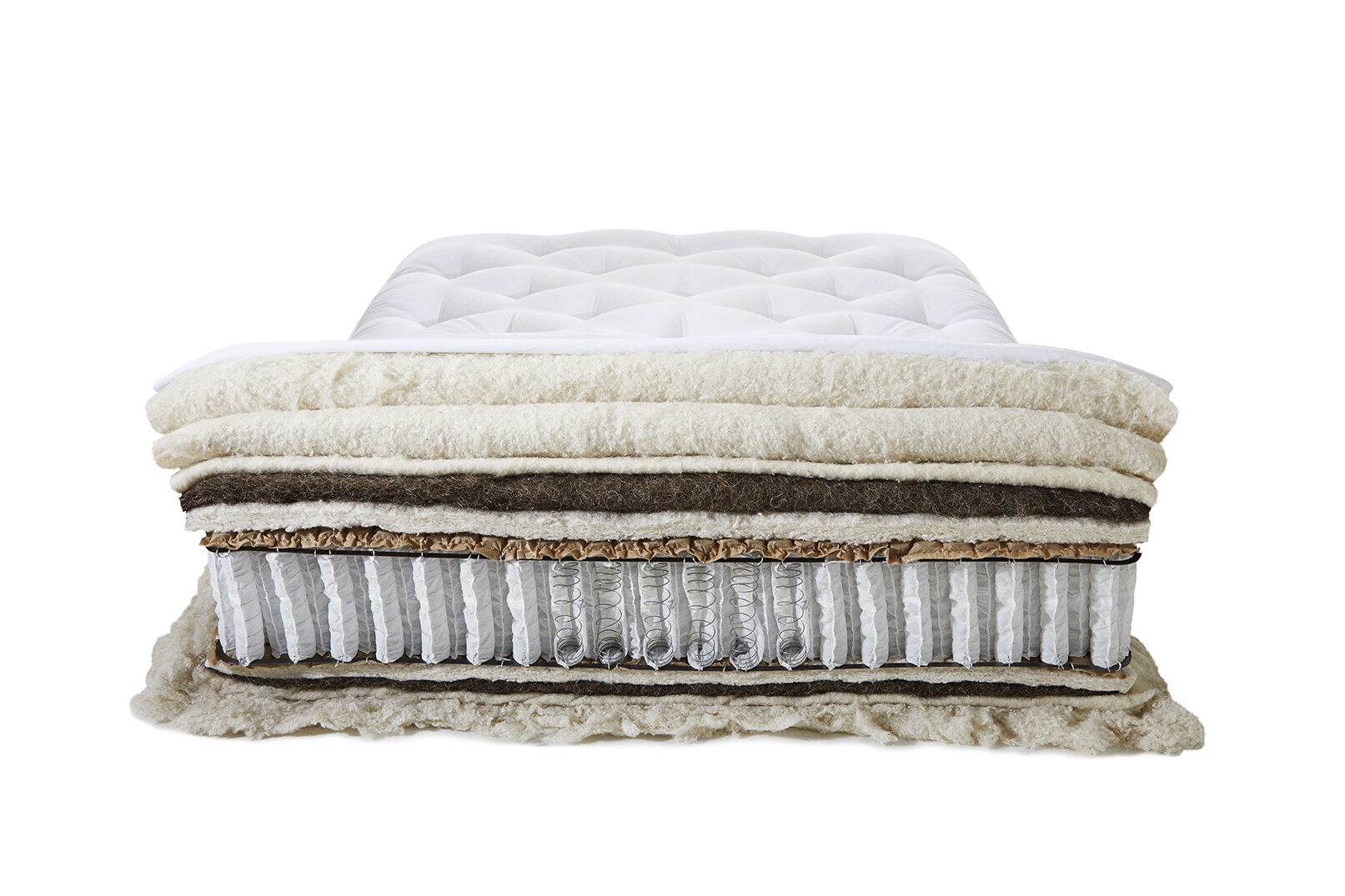
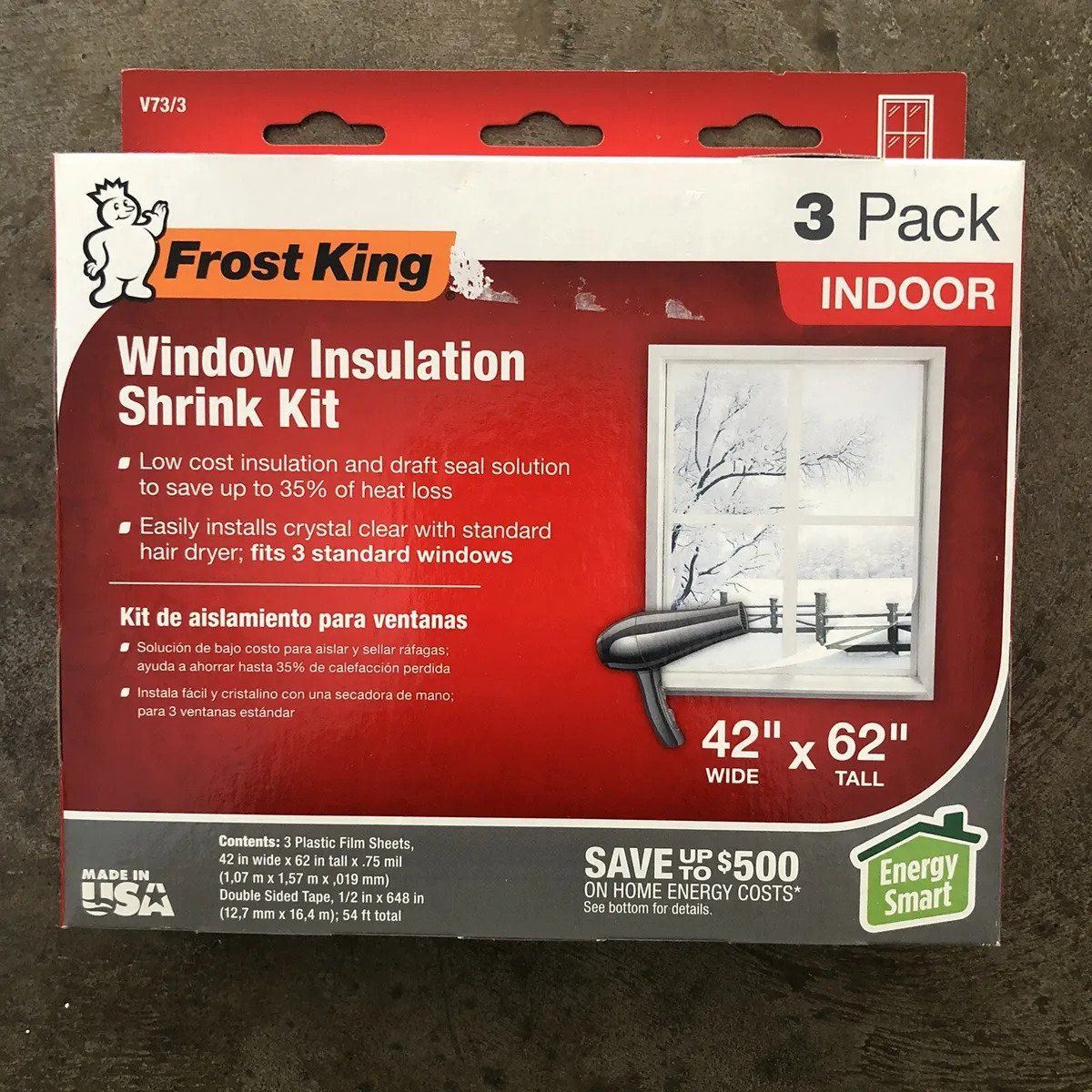



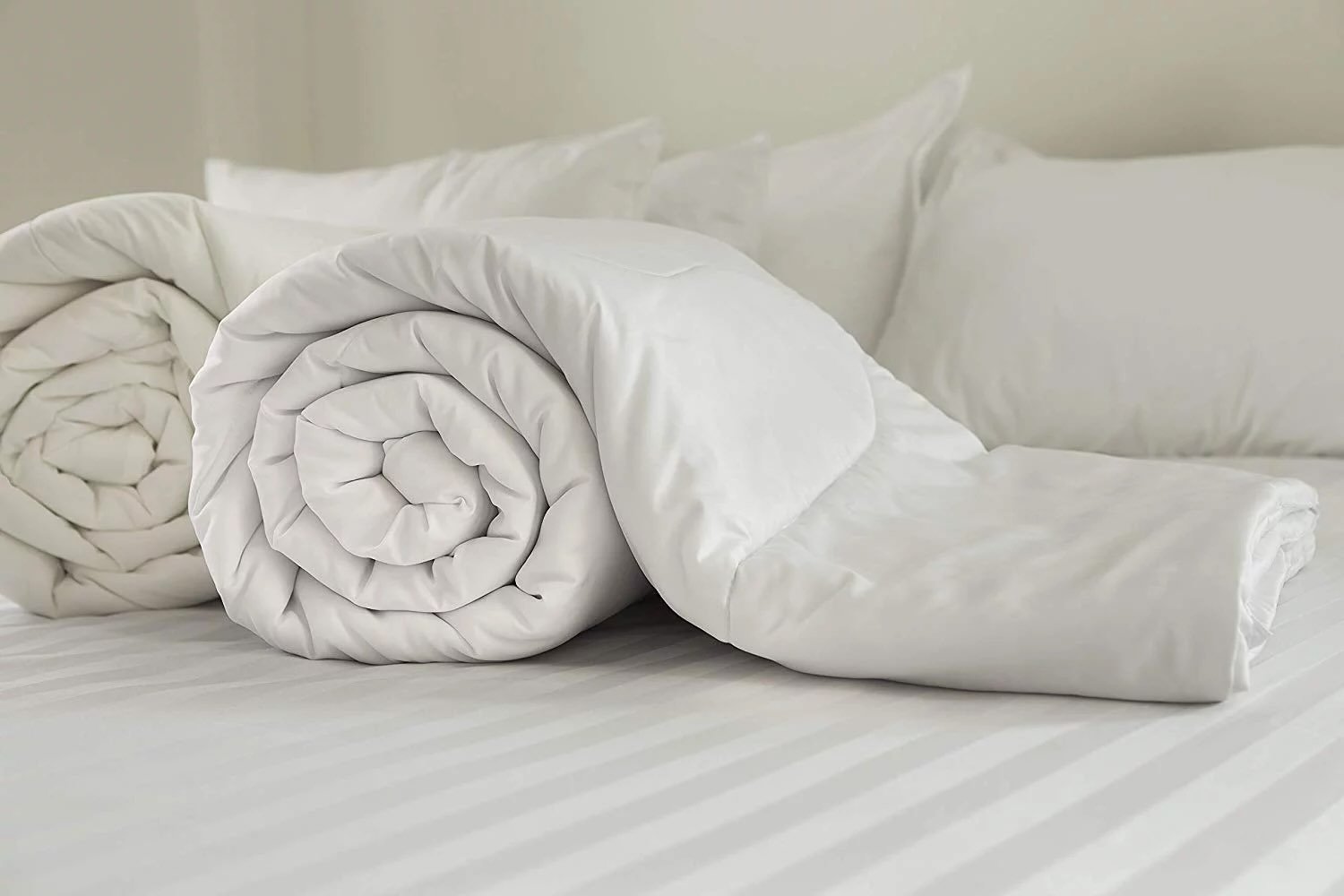

0 thoughts on “What Causes Frost On The Inside Of Windows?”